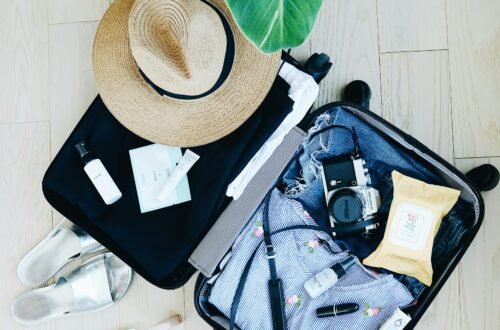
Island Hopping with Respect: Essential Caribbean Customs and Traditions You Should Know.
The Caribbean, a paradise of turquoise waters, swaying palm trees, and infectious rhythms, beckons travelers with the promise of relaxation and adventure. But before you set sail for sun-drenched shores, familiarizing yourself with local customs and traditions is key to a smooth and culturally enriching experience. Here’s your guide to navigating the Caribbean like a seasoned traveler:
Greetings:
- The Art of the “Lickkle More”: In Jamaica, a friendly “Lickkle More” (a little bit more) is a common greeting used to acknowledge someone. Respond with a smile and a “Respect” to show you understand the local lingo.
- The Easygoing “Good Morning”: A simple “Good morning,” “Good afternoon,” or “Good evening” is perfectly acceptable in most Caribbean islands. Bahamians are known for their friendly and welcoming nature. A cheerful “good morning sunshine” is a great way to start a conversation with a local.
- The Formal “Sir” or “Ma’am”: When addressing elders or those in service positions, using “Sir” or “Ma’am” is a sign of respect.
- Respectful Greetings in the Dominican Republic: A handshake and a warm “Hola” (hello) are standard greetings in the Dominican Republic. Maintain eye contact and a smile for a positive first impression.
Island Time and Respecting the Pace:
- Island Time is Real: The Caribbean operates on a more relaxed schedule. Be patient with wait times and embrace the slower pace of life. “One Love” as they say in Jamaica!
- Respecting Siesta: Similar to Mexico, some Caribbean islands, particularly those with strong Spanish influence, observe siesta time in the afternoon. Plan your activities accordingly.
Table Manners:
- “Irie” After Every Bite: The Jamaican expression “Irie” (meaning good or excellent) can be used to express appreciation for a delicious meal.
- Sharing is Caring: In some Caribbean cultures, sharing food is a sign of hospitality. Don’t be surprised if your plate gets topped up by a friendly local! St. Lucian cuisine is known for its communal platters. Embrace the spirit of sharing and try a bit of everything!
- Ask Before You Season: Hot peppers are a staple in Caribbean cuisine. Always ask before adding spice to your dish, especially if you have a low tolerance. Trinidadian cuisine is known for its bold flavors. If you can’t handle the heat, ask for your food “mild” or “without pepper.”
- The Lunchtime Break in Barbados: Lunch is the main meal of the day in Barbados. Many restaurants close for an extended lunch break, so plan your meals accordingly.
Tipping:

- Tipping for Good Service: A 10-15% tip is customary in restaurants, especially if service was attentive. Leave a small tip for bellhops and porters as well.
- Small Change is Key: Carry small bills and local currency for tipping street vendors, taxi rides, and restroom attendants.
Cultural Considerations:
- Dress Modestly for Religious Sites: When visiting churches or mosques, opt for conservative clothing that covers shoulders and knees.
- Bargaining with a Smile: Haggling is expected at local markets and with street vendors. Be polite, respectful, and have fun with the negotiation!
- Public Displays of Affection: Public displays of affection vary by island. While some are more relaxed, it’s always best to be mindful of local sensibilities.
Island Specific Traditions:
- Friday Night Fish Fry in Barbados: Every Friday night, Oistins comes alive with the Barbados Fish Fry. Sample fresh seafood dishes and immerse yourself in the vibrant atmosphere.
- Junkanoo in the Bahamas: This vibrant Bahamian parade, filled with colorful costumes and lively music, is a must-see cultural experience held around Christmas and New Year’s.
- Liming in Trinidad and Tobago: “Liming” is the Trinidadian art of relaxing, socializing, and enjoying good company. Find a local bar or hangout and embrace the laid-back island vibe.
Learning a Few Key Phrases:
A few basic phrases in the local language go a long way. Here are some helpful examples:
- “Thank you” – Gracias (Spanish), Merci (French), Shukran (Arabic)
- “Hello” – Hola (Spanish), Bonjour (French), Hallo (Dutch)
- “How much does this cost?” – ¿Cuánto cuesta esto? (Spanish), Combien cela coûte-t-il ? (French)
There are more helpful examples in one of our Essential Phrases download. They are currently available in Spanish, French and Korean.
Travel with Respect and Embrace the Culture:
By understanding these Caribbean customs and traditions, you’ll be well on your way to a fantastic vacation. Remember, respect goes a long way. Strike up conversations with locals, try new foods, and immerse yourself in the rich tapestry of Caribbean culture.
Bonus Tip: Download a translation app to help with basic communication and understanding local signs. Try Microsoft Translator, iTranslate, or Google Translate.
Research for an Authentic Experience
- Look for travel blogs and websites focused on the specific Caribbean islands you plan to visit.
- Each Caribbean island often has its own tourism website with information on local customs and traditions.
- Traditional guidebooks often have sections on cultural norms specific to different islands.
With a little preparation and a respectful approach, you can ensure your Caribbean adventure is filled with unforgettable memories and a deep appreciation for the local way of life. So, pack your bags, embrace the island and enjoy your stay!
Feature image is by Freepik





